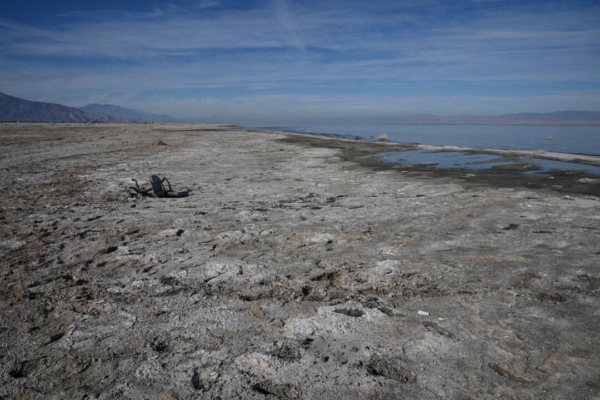California and federal officials held a groundbreaking ceremony on Tuesday, October 15th, to kick off the expansion of restoration efforts at the Salton Sea, one of California’s largest lakes.
Located in Imperial County in Southern California, the Salton Sea is a saline lake. In recent years, the lake has been shrinking due to declining water levels, exposing the lakebed, leading to deteriorating air quality and damaging habitats for fish and wildlife.
The U.S. Department of the Interior (DOI) stated that funding for the expansion of the Salton Sea Species Conservation Habitat project partly comes from $250 million from the federal Inflation Reduction Act, with California also allocating over $500 million for the restoration of the Salton Sea.
The project aims to create a network of ponds and wetlands in the Salton Sea region to provide habitats for fish and birds, while reducing dust to improve air quality in the area. According to the Governor’s office statement, the initial phase of the project covered 4,100 acres of land, and now it is expanding by 750 acres, reaching a total area of nearly 5,000 acres. California Governor Gavin Newsom stated on October 15th, “California has made significant progress in the restoration of the Salton Sea, and we are expanding this critical work to create habitat on several hundred additional acres of land and help improve air quality for nearby communities.”
California Senator Alex Padilla, who participated in the groundbreaking event, mentioned that federal funding could potentially expand the restoration work at the Salton Sea to around 8,000 acres in the future. In his statement on October 15th, he said, “As the Salton Sea lakebed recedes, toxic dust is contaminating air quality, threatening the stability of the local ecosystem.”
Historical records show that in 1905, an irrigation inflow from the Colorado River broke, causing flooding of a high-saline area and forming the Salton Sea. Over the past century, this body of water has become a habitat for fish and migratory birds. Decades of drought conditions and modern agricultural development in surrounding valleys have reduced freshwater inflow, while the Salton Sea has become a collection point for agricultural runoff containing fertilizers and pesticides.
In December of last year, California secured a $70 million grant from the Bureau of Reclamation through the Inflation Reduction Act, allowing for the expansion of the lake’s restoration work. Padilla mentioned that in August of this year, an agreement was reached with the Bureau of Reclamation to facilitate land acquisition for project implementation and an additional $175 million in federal funds to accelerate restoration efforts.

